#IoT Sensors and Devices
Text
youtube
NXP: MCX A Series Launch Video
https://www.futureelectronics.com/resources/featured-products/nxp-mcx-n-mcx-a-microcontrollers . MCX A Series all-purpose microcontrollers (MCUs) address a wide range of applications with scalable device options, low power and intelligent peripherals. Designed to allow engineers to do more, the new MCX A series is optimized with the essential features, innovative power architecture and software compatibility required by many embedded applications. https://youtu.be/fjNG2t4TBXQ
#nxp#MCX#MCX A#all-purpose microcontrollers#MCU#MCX A series#microchip#small-footprint MCU#software compatibility#embedded applications#industrial sensors#motor control#power system#controllers#IoT devices#Youtube
0 notes
Text
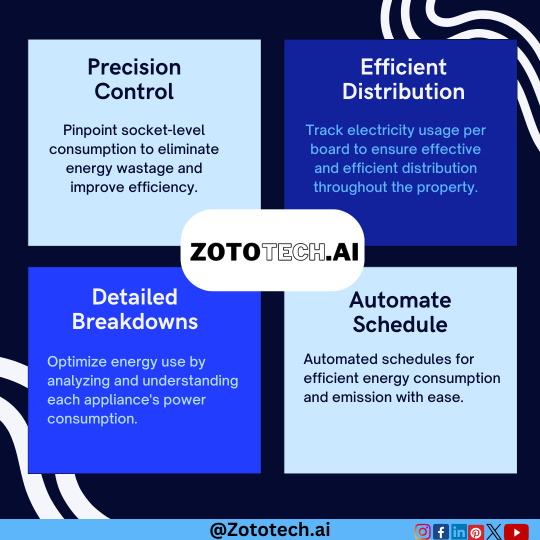
From controlling your lights and temperature with a tap to enhancing security with smart locks, discover the endless possibilities of a connected home.
#home automation#zototech#smartliving#energy efficient lighting#sustainability#iotsolutions#commercial property#iot development services#why home automation#smart motion sensors#smart switch boards#app control devices
0 notes
Text
Sensor Data for Internet of things (IOT)
In today's ever-evolving digital landscape, the Internet of Things (IoT) has emerged as a transformative force, reshaping how we interact with our environments.
The seamless integration of sensor data, which enables a multitude of applications across varied industries, is central to this technological transformation. From smart homes and cities to industrial automation and healthcare, the possibilities are endless when it comes to leveraging sensor data for IoT solutions.
I am Techy Saad and welcome to Techy Saad blogs. Let's understand the sensor data for IOT.
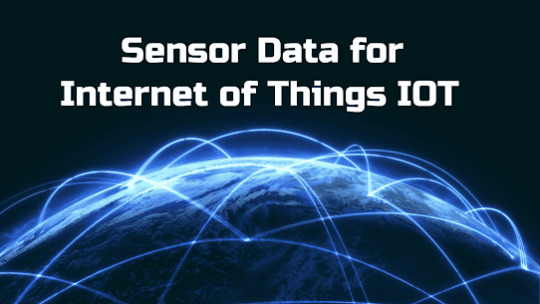
Understanding Sensor Data
Sensor data, the lifeblood of interconnected systems, is information gathered from sensors placed in the real world. These sensors detect and measure changes in their surroundings; they can measure temperature, humidity, chemicals, pressure, proximity, solar radiation, fluid levels, and optical properties. The information gathered from these sensors offers priceless insights into real-world phenomena, facilitating well-informed decision-making and improving efficiency across a range of domains.
The Role of Sensor Data in IoT
Sensor data is essential to IoT because it enables intelligent decision-making and automation. IoT devices can monitor, analyze, and react to changes in their environment in real time by gathering data from various sources. For example, a smart home with proximity, humidity, and temperature sensors can adjust its heating and cooling settings based on occupancy and environmental conditions, maximizing energy efficiency and improving comfort.
In industrial environments, sensors are essential for tracking equipment performance and guaranteeing optimal operation. For example, pressure sensors can identify changes in fluid pressure in pipelines, allowing for predictive maintenance to avert expensive malfunctions, and level sensors can track fluid levels in tanks to enable prompt replenishment and minimize downtime.
There are many kinds of Internet of things sensors. Here are few and most common used IOT sensors:
Temperature Sensors
In the same way that a single inaccurate temperature reading in a factory may spoil a whole batch of food, temperature controls in factories frequently determine what will happen to a product. Temperature sensors serve this purpose by providing us with relevant information about the temperature.
Pressure Sensor
One typical usage for a pressure sensor is to detect changes in the pressure of a gas or liquid and convey that information to any other devices that are linked to it. One common use for a pressure sensor is to test for leaks, which could be caused by wear and tear.
Level Sensor
Level sensors are used in many different sectors, such as oil, cleaning water, food and drink, and waste management systems because they can detect when a trash can or dumpster is full. They can also measure the height of liquids, powders, granules, and other materials.
Sensor for Humidity
Humidity sensors are widely used in HVAC (heating, ventilation, and air conditioning) systems in homes and businesses; they are used in weather stations to forecast the weather and in hospitals to monitor patient care. Water vapors sensors measure the amount of humidity in a sample of air or a mixture of gases.
Sensors for Chemical
In addition to providing real-time data for detecting chemical leaks in drums or tanks, chemical sensors can benefit any business that uses process lines. These Internet of Things sensors can also guarantee that hazardous materials are handled securely and safely whenever they are used on-site, which would make the factory a safer and more productive place to work.
Key Considerations for Sensor Data in IoT Deployments
Effectively harnessing sensor data in IoT deployments requires careful consideration of several factors:
Data Quality
Ensuring the accuracy and reliability of sensor data is paramount. Regular calibration and maintenance of sensors are essential to maintain data integrity and fidelity.
Data Security
Protecting sensor data against cybersecurity threats is critical. Implementing robust encryption, access controls, and data governance practices safeguards sensitive information from unauthorized access and manipulation.
Scalability
Leveraging scalable data storage and processing options, such as cloud platforms and edge computing...
Read Full Article by clicking below:
Read Full
#sensor#iot#iot devices#Techy Saad#writers on tumblr#programmer#tech world#inventions#future#creative writing#inovation#tech#technology#blog#blogger#blogging
1 note
·
View note
Text
Has the Internet of Things (IoT) changed our daily lives?
The Internet of Things (IoT) is drastically changing our lives, making everything more connected and accessible. IoT has made its way into everyday items, making them part of an information ecosystem that's reshaping our world.
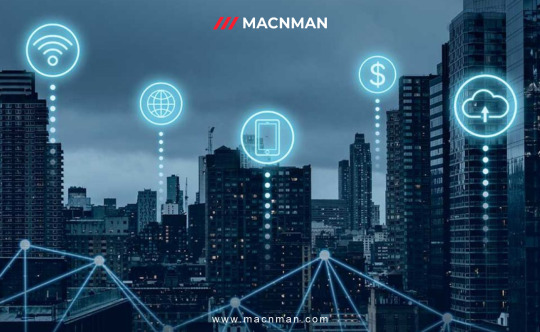
So, how will IoT change the world? IoT has already revolutionized where and how work is done across various industries. It's ushering in the era of the Internet of Everything (IoE), connecting machines, people, processes, and data in ways that profoundly impact our daily lives.
Looking at real-life IoT examples, we see automated temperature control through thermostats, smart devices like Amazon Echo and Google Home, wearables tracking heart rates, home security systems, and voice-activated smart lighting systems.
IoT has a profound influence on our daily routines, transforming various aspects of our lives by harnessing the power of connectivity, data, and intelligent machines.
Smart Home Convenience: IoT has made our homes smarter and more convenient. We can control our thermostats, lights, and appliances remotely using smartphones or voice commands through devices like Amazon Echo and Google Home. Smart locks, cameras, and doorbells provide enhanced security and peace of mind.
Health and Wellness: Wearable IoT devices such as fitness trackers and smartwatches have become commonplace. They help individuals monitor their physical activity, heart rate, sleep patterns, and more. These devices encourage healthier lifestyles and empower people to take charge of their well-being.
Connected Transportation: IoT plays a significant role in transportation through applications like vehicle telematics and navigation systems. Smart cars can communicate with each other and with traffic infrastructure to optimize routes and enhance safety. Ride-sharing apps also rely on IoT for efficient matching and tracking.
Precision Agriculture: In agriculture, IoT sensors and devices monitor soil conditions, crop health, and weather data. Farmers can make data-driven decisions to optimize irrigation, fertilization, and pest control, increasing crop yields while conserving resources.
Healthcare: IoT has transformed healthcare with remote patient monitoring. Devices can track vital signs and transmit data to healthcare providers, allowing for early intervention and reducing the need for frequent hospital visits. IoT-enabled medical equipment also enhances patient care.
Retail and Shopping: IoT has changed the way we shop. Smart shelves and beacons in stores provide personalized offers and product recommendations. E-commerce benefits from IoT through inventory management, tracking deliveries, and optimizing supply chains.
Energy Efficiency: Smart meters and IoT-connected appliances enable homeowners to monitor and reduce energy consumption. This not only lowers utility bills but also contributes to environmental sustainability.
Industrial IoT (IIoT): In the industrial sector, IoT sensors and automation improve production processes, reduce downtime, and enhance overall efficiency. IIoT also enables predictive maintenance, saving both time and resources.
Environmental Monitoring: IoT is used for environmental monitoring and conservation efforts. Sensors collect data on air quality, water quality, and wildlife movement, aiding in environmental research and protection.
Smart Cities: IoT technologies are integral to smart city initiatives. They help manage traffic flow, optimize waste collection, enhance public safety, and provide real-time information to residents and visitors.
Supply Chain Optimization: Businesses use IoT to track goods and shipments throughout the supply chain. This improves inventory management, reduces losses, and ensures products reach consumers more efficiently.

In essence, IoT has become an integral part of modern life, affecting various aspects of our daily routines. Its ability to connect devices, collect data, and enable automation has brought about greater convenience, efficiency, and connectivity in nearly every industry and sector. As IoT continues to evolve, its impact on our lives will likely grow even more significant.
0 notes
Text
Exploring the Future of IoT | Internet of Things
Internet of Things (IoT) has already transformed the way we perceive and interact with technology connecting everyday objects to the digital world. As we navigate through a rapidly evolving technological landscape it becomes crucial to delve deeper into the future of IoT and the endless possibilities it holds. Let’s explore the exciting advancements and emerging trends that will shape the future…
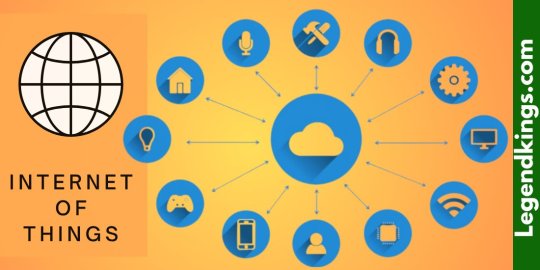
View On WordPress
#connected devices#Data Analytics#Emerging IoT Technologies#Future Technology#Industrial IoT#IoT Applications#IoT Automation#IoT Connectivity#IoT Data Privacy#IoT Ecosystem#IoT in Agriculture#IoT in Healthcare#IoT Industry Insights#IoT Infrastructure#IoT Innovations#IoT Security#IoT Sensors#IoT Sustainability#IoT Trends#Smart Homes
0 notes
Text
Arduino PLC | MQTT End Device | Industrial IoT device manufacturer | norvi.lk
How Programmable IoT Devices Operate
Having access to the most dependable and effective hardware speeds up the completion of your project. The ability to programme flexibly.
ESP32 Ethernet Device
When using ESP32 Ethernet, the NORVI ENET series is the best option because it has industrial-grade I/O and voltages. Both wireless and cable connectivity to the network are offered by ESP32 Ethernet.
Industrial Arduino Mega
The NORVI Arita is an enhanced version of the NORVI Series. Five conventional variants with a choice of two potent microprocessors are offered. Arita is built to deliver all of the micro-controller's performance while maintaining reliability. It works with practically all industrial input and output formats.
Arduino based Industrial Controller
Arduino IDE-programmable
Integrated OLED and customizable buttons for HMI
The ability to programme flexibly
LED signals for simple diagnosis
Applications Using a Programmable MQTT Device and Ultra Low Energy Batteries
Agent One Industrial Controllers are available for low power applications as well; STM32L series microcontroller-controlled devices are employed in ultra low power applications, where the devices must be powered by batteries for an extended period of time. When a device goes to sleep, the Agent One BT family is specifically built with transistor outputs to turn off external sensors.
Wall mount IoT Node
The NORVI SSN range is designed for independent installations in industrial settings with a focus on tracking sensor data or parameters from external devices. The implementations are made simple by the attachments for wall installation and pole mount.
NORVI Controllers
Our Address :
ICONIC DEVICES PVT LTD
Phone : +94 41 226 1776 Phone : +94 77 111 1776
E-mail : [email protected] / [email protected]
Web : www.icd.lk
Distributors
USA
Harnesses Motion LLC
1660 Bramble Rd. Tecumseh, MI
49286, United States
Phone : +1 (734) 347-9115
E-mail : [email protected]
EUROPE
CarTFT.com e.K.
Hauffstraße 7
72762 Reutlingen
Deutschland
Phone : +49 7121 3878264
E-mail : [email protected]
MQTT End Device | Arduino PLC | Analog Input | Wireless sensor | ModBus MQTT gateway | Industrial IoT device manufacturer | WiFi Data logger
#Programmable IoT Devices#Industrial IoT Devices#Industrial Arduino#Arduino PLC#ESP32 Ethernet Device#Programmable Ethernet IoT Device#MQTT End Device#Industrial Arduino Mega#Arduino Mega PLC#Arduino based Industrial Controller#Programmable MQTT Device#Modbus MQTT Device#ESP32 Modbus device#Wall mount IoT Node#Wall mount sensor node#Programmable sensor node#Wireless sensor#Battery Powered IoT Node#Battery Powered Programmable Sensor node#Solar powered sensor node#MODBUS RTU ESP32#Modbus to IoT gateway#Modbus MQTT gateway#Programmable MQTT devices#MQTT over WIFI devices#MQTT over Ethernet devices#Industrial IoT device manufacturer#0 - 10V Arduino device#4 - 20mA Arduino device#ESP32 data logger
1 note
·
View note
Text
AI and IoT applications will enhance the user experience and add value to smart homes by making life more secure, comfortable, convenient, and safe. To know more about browse: https://teksun.com/ Contact us ID: [email protected]
#AI#IoT#Smart home technology#Home automation#Smart devices#Machine learning#Voice assistants#Energy efficiency#Home security#Remote monitoring#Connected devices#Home sensors
0 notes
Text
IoT Adoption and Security Issues in French Cities
The Internet of Things (IoT) is rapidly changing the way we interact with technology, and French cities are no exception. As urban centers seek to become more efficient and sustainable, they are increasingly turning to IoT devices to help manage everything from traffic flow to energy usage. However, as with any new technology, there are also significant security challenges that must be addressed…
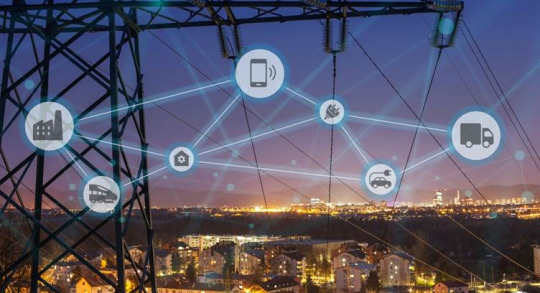
View On WordPress
#Citizen engagement#CYBERSECURITY#Data management#Data privacy#Digital transformation#Energy efficiency#French cities#Internet connectivity#IoT#Mobile devices#Network security#Public services#Risk management#Security challenges#Sensor technology#Smart cities#Sustainability#Urban infrastructure#Urban planning
0 notes
Text
IoT Temperature Sensors: Uses and Benefits of IoT-based Temperature Sensors
The Internet of Things technology has been growing rapidly. Its remote monitoring and advanced analytics applications are transforming businesses and offering significant benefits to firms. Read more - https://theomnibuzz.com/iot-temperature-sensors-uses-and-benefits-of-iot-based-temperature-sensors/
#IoT-based Temperature Sensors#IoT Temperature Sensors#IoT devices manufacturers#IoT device manufacturing companies#IoT sensors manufacturers#trailer tracker#asset tracking devices#real time supply chain visibility#supply chain visibility#real time temperature & location tracker#automotive gps tracker#IoT asset tracking#iot asset tracker#5g tracking device#iot connected devices#NB IoT device
0 notes
Text
#紫微斗數#youtube#ilucky986愛幸運紫微斗數#名人紫微斗數命盤#流年運勢#2023運勢#命宮#工業電腦#物聯網#iottechnology#iot devices#iot sensor market#ipc
0 notes
Text

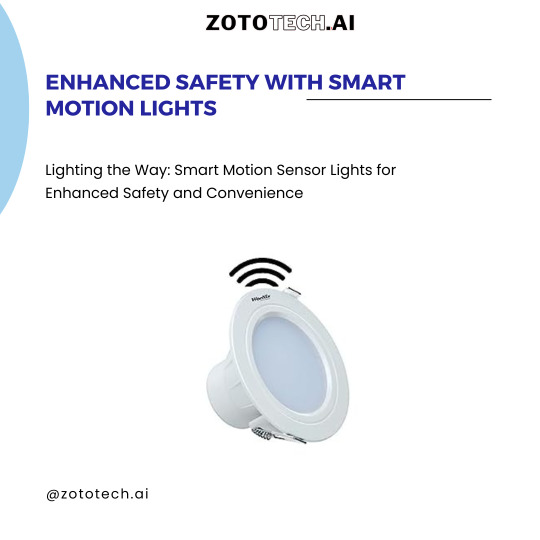

#home automation#iot#iotsolutions#iotdevices#smartlighting#zototech#cob light#smart motion sensors#smart home devices#smart buildings
0 notes
Text
LPWAN AND SENSOR DEVICES — HOW DO THEY COME TOGETHER?
WHO ARE LPWAN?
A low-power wide-area network, or LPWAN, is a kind of wireless wide-area network created to enable long-distance communications at a low bit rate among things (connected items), including sensors run on a battery. A Low-Power Wide-Area Network is a wireless wide area network that caters largely to low-power devices (LPWAN). The Wireless Sensor Network uses LPWAN for the sensor devices’ communication.
THE MOST POPULAR LPWAN TECHNOLOGIES
SUB-1 GHZ
NBIOT
ZIGBEE
LORAWAN
LTE CAT-M1 OR LTE-M
SIGFOX
LPWAN-BASED WIRELESS SENSOR NETWORK (WSN)
A group of autonomous, scattered devices known as a Wireless Sensor Network (WSN) employs sensors to keep an eye on its surroundings. The sensor nodes utilised in WSN systems are integrated with the onboard controllers. The whole circuitry primarily regulates and oversees operation. The complex data processing carried out at the base station known as the Gateway, which is connected to everything, takes place there.
The majority of the dispersed sensor nodes in a WSN are connected by LPWAN, and they all interact with the gateway.

LPWAN SENSOR DEVICE COMMUNICATION STRUCTURE
A wireless sensor node is furnished with power supplies, radio transceivers, and sensing and processing equipment. A wireless sensor network (WSNindividual )’s nodes are intrinsically resource-restricted because of their confined processing power, storage space, and communication bandwidth. Radio transmissions are used by the sensor nodes to communicate among themselves.
After being installed, the sensor nodes are in charge of self-organizing a suitable network architecture and often communicating with them across several hops. The integrated sensors then start gathering important data.
In order to carry out certain instructions or offer sensing, wireless sensor devices further reply to inquiries issued from a control site or the gateway.
WHAT DOES AN LPWAN GATEWAY UNIT DO? HOW DO SENSOR APPLICATIONS CONNECT TO AN LPWAN GATEWAY?
The Gateway serves as a conduit between the cloud and the WSN or other networks. This makes it possible for data to be stored and processed by equipment with higher power on a gateway unit, a distant server.
Both edge computing and cloud computing are crucial to IoT applications.
A gateway, also known as an edge gateway, is a device that enables network administration (control) and combines data from nodes to provide real-time or almost real-time data to a user platform. The user may operate and monitor the WSN locally when the gateway is linked to a nearby laptop. The gateway may be remotely managed and can transfer data to the cloud by connecting a cellular modem (which supports LTE, NBIoT, LTE-catM1, etc.) or an Internet modem (which supports wifi).
The gateway is crucial since it manages the WSN’s sleeping protocol as well as its communication component. The gateway wakes up nodes at a specific time, exchanges data with them, and then sends them back to sleep. WSNs must sleep in order to conserve power. Typically, a sensor node will sleep 90% of the time.
The management of device connectivity, processing, protocol translation, data filtering, security, etc. is handled by IoT gateways. By processing data, some of the more recent gateways also serve as platforms for application code.
LPWAN CLOUD TRANSMISSION OF COLLECTED SENSOR DATA
IoT Gateway devices are situated where LPWAN-connected sensor nodes and cloud-based IoT device nodes meet. The cloud will receive the data sent by wireless sensor networks and other IoT devices after it has been transferred through gateways. After being stored in the cloud, the received data is subsequently made available to consumers as a service.
A completely managed service from Google called Cloud IoT Core makes it simple and safe to connect to, control, and ingest data from millions of widely scattered devices.
MQTT and HTTP are the two protocols that Cloud IoT Core supports for connecting to and communicating with devices. Using either the MQTT bridge or the HTTP bridge, devices connect to Cloud IoT Core. One of the main elements of the Cloud IoT Core is the MQTT/HTTP bridge.
You may choose to activate MQTT, HTTP, or both protocols when creating a device registry.
MQTT is a widely used publish/subscribe protocol that is supported by embedded hardware and used regularly in machine-to-machine communications.
Since HTTP is a “connectionless” protocol, devices using the HTTP bridge don’t keep a connection to Cloud IoT Core open. Rather, they make requests and get answers. Only HTTP 1.1 is supported by Cloud IoT Core.
A MOBILE APP OR IOT DASHBOARD FOR Analysis and visualisation DATA COLLECTED FROM SENSOR DEVICES
The data produced by IoT devices is examined in relation to time. After processing, the timestamp data is uploaded to the cloud storage of the IoT devices, where it creates a database. IoT Dashboard generates data visualisations for users by reading data from the database.
Only if the IoT Dashboard can load data quickly and generate visuals from the database is it said to be useful. By combining the data (which is gathered through remotely dispersed smart devices) with its own database, certain IoT web apps give customers an enhanced experience.
CONCLUSION
Key technologies for LPWA applications that have already enabled several million connected devices include CAT-M, NB-IoT, Sigfox, and LoRa. It might be difficult to choose the best technology in markets that are competitive.
Unlicensed LPWAN is ideal for industrial, warehouse, and agricultural applications whereas licensed LPWAN is better suited for regions where adequate mobile networks have been widely deployed.
Early market entrants Lora and Sigfox progressively took the lead in terms of cost per unit and battery life, whereas NB-IoT is still in development and has not yet seen widespread use and testing. However, CAT-M has carved out a special space for itself and, because to its support for a greater data rate, has encountered fewer difficulties in this market.
Also read: A comparison between LTE-M and NBIoT
What PsiBorg does
A remarkable technology that is revolutionising IoT device connectivity is LPWAN technology. PsiBorg can assist you if your project calls for the use of LPWAN technology.
We are a group of seasoned engineers with in-depth understanding of integrating several LPWAN technologies in Internet of Things sensor networks, and we used tremendous imagination and invention to design the related Best IoT dashboard. Get in touch with us right now for further details.
This article was originally published here: HOW DOES SENSOR DEVICES COMMUNICATE ON LPWAN ?
1 note
·
View note
Text
What is the difference between the LoRaWAN wireless module and LoRa gateway wireless transmission technology?
Many individuals find it challenging to differentiate between the LoRaWAN wireless module and LoRa gateway wireless transmission technology, as well as their applications within the realm of IoT.
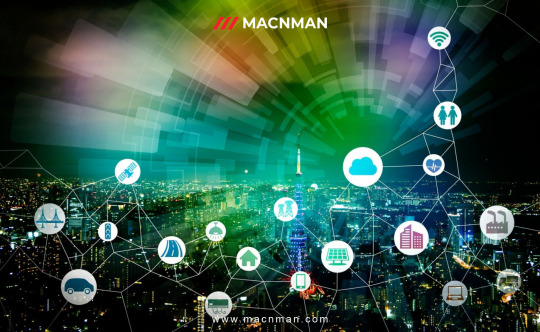
LoRaWAN specifically pertains to the networking protocol found within the MAC (Media Access Control) layer. In contrast, LoRa serves as a protocol within the physical layer. Although current LoRaWAN networking implementations utilize LoRa as the physical layer, it's worth noting that the LoRaWAN protocol also allows for the use of GFSK (Gaussian Frequency-Shift Keying) as the physical layer in specific frequency bands. From a network layering perspective, LoRaWAN can adopt various physical layer protocols, just as LoRa can serve as the physical layer for other networking technologies.
LoRa, as a technology, falls under the category of LPWAN (Low-Power Wide-Area Network) communication technologies. It represents an ultra-long-distance wireless transmission method based on spread spectrum technology, pioneered and promoted by Semtech in the United States. This approach revolutionizes the previous trade-off between transmission distance and power consumption, offering users a straightforward system capable of achieving extended range, prolonged battery life, and increased capacity. Consequently, it expands the capabilities of sensor networks. Currently, LoRa predominantly operates within free frequency bands globally, including 433/868/915MHz, among others.
On the other hand, LoRaWAN wireless communication stands as an open standard defining the communication protocol for LPWAN technology based on LoRa chips. LoRaWAN defines the Media Access Control (MAC) layer at the data link level and is overseen by the LoRa Alliance. It's crucial to distinguish between LoRa and LoRaWAN because companies like Link Labs utilize a proprietary MAC layer in conjunction with LoRa chips to create more advanced hybrid designs, such as Link Labs' Symphony Link.
LoRaWAN typically employs a star or star-to-star topology, which is generally considered superior to mesh networks due to advantages such as conserving battery power and extending communication range. In a star topology, messages are relayed to a central server through gateways, and each end node can transmit data to multiple gateways. These gateways then forward the data to the web server, where tasks like redundancy detection, security checks, and message scheduling are executed.
In summary, LoRa encompasses solely the link layer protocol, making it suitable for point-to-point (P2P) communication between nodes. In contrast, LoRaWAN includes the network layer, allowing data to be sent to any base station connected to a cloud platform. By connecting the appropriate antenna to its socket, the LoRaWAN module can operate at different frequencies, offering versatility in its applications.
0 notes
Text
Industrial IoT Devices | Programmable Ethernet IoT Device | Industrial ESP32 | NORVI
Ready for the Future - NORVI IIOT
Programmable IoT Devices - Our Arduino based PLC s make it easy to automate processes, connect sensors, and create sophisticated automation systems. Get the most out of your IoT projects with programmable ESP32 Ethernet device. Our MQTT end device is designed to be easy to setup, while providing powerful performance.
Industrial Arduino Mega - Get reliable, secure, and customizable control of your industrial processes with Arduino Mega PLCs. Get the best out of your system. Industrial Arduino for Automation Applications which control industrial processes with Arduino based hardware and software. Programmable with Arduino IDE.
Modbus MQTT Device - NORVI Agent Industrial IoT Node. Ready to use IoT Node. Ready for industrial applications. WiFi LoRa NB-IoT. Wall mount IoT node is designed for industrial applications and boasts a range of features including WiFi, GSM, LTE and LoRa connectivity. Battery Powered IoT node with WiFi GSM LTE LoRa connectivity for industrial applications. Our programmable nodes are designed for powering your IoT solutions.
ModBus RTU ESP32 - MODBUS Communication on ESP32 NORVI IIOT via RS-485. ModBus RTU with ESP32 based industrial controller. MQTT over Ethernet devices - Norvi offers programmable MQTT devices come with a variety of features that make them suitable for industrial automation and IoT solutions. As a leading industrial IoT device manufacturer, NORVI Offers Industrial Controllers for IoT applications, ESP32 based Industrial Controllers, Industrial IoT Devices. Changing IOT One Device At A Time (4 - 20mA, 0 - 10V DC Analog inputs and Outputs). Programmable controllers with flexibility and open source software.
ESP32 Data Logger - NORVI can build a WiFi Data Logger using SD card, Combining few libraries of Arduino you can access or view the Temperature & Humidity via WiFi. NORVI's Analog Input ESP32 is designed for industrial applications, allowing you to measure and monitor 0-10V or 4-20mA signals using an ESP32 controller.
NORVI Controllers
Our Address :
ICONIC DEVICES PVT LTD
Phone : +94 41 226 1776 Phone : +94 77 111 1776
E-mail : [email protected] / [email protected]
Web : www.icd.lk
Distributors
USA
Harnesses Motion LLC
1660 Bramble Rd. Tecumseh, MI
49286, United States
Phone : +1 (734) 347-9115
E-mail : [email protected]
EUROPE
CarTFT.com e.K.
Hauffstraße 7
72762 Reutlingen
Deutschland
Phone : +49 7121 3878264
E-mail : [email protected]
Products :
ESP32 Ethernet Device
Industrial Arduino Mega
ESP32 Modbus device
Programmable sensor node
Battery Powered Programmable Sensor node
4 - 20mA ESP32
Know More About:
WiFi Datalogger
4 - 20mA Arduino device
Industrial IoT Devices
Modbus MQTT gateway
Arduino based Industrial Controller
#Programmable IoT Devices#Industrial IoT Devices#Industrial Arduino#Arduino PLC#ESP32 Ethernet Device#Programmable Ethernet IoT Device#MQTT End Device#Industrial Arduino Mega#Arduino Mega PLC#Arduino based Industrial Controller#Programmable MQTT Device#Modbus MQTT Device#ESP32 Modbus device#Wall mount IoT Node#Wall mount sensor node#Programmable sensor node#Wireless sensor#Battery Powered IoT Node#Battery Powered Programmable Sensor node#Solar powered sensor node#MODBUS RTU ESP32#Modbus to IoT gateway#Modbus MQTT gateway#Programmable MQTT devices#MQTT over WIFI devices#MQTT over Ethernet devices#Industrial IoT device manufacturer#0 - 10V Arduino device#4 - 20mA Arduino device#ESP32 data logger
0 notes
Text

IOT Software Development Company - Pinesucceed Technologies
When you think of IoT applications, lots of things come to mind. For example, some people might draw parallels with home automation and not even realize that IoT is very different than virtual reality in terms of development processes and technical complexity.
In other areas, developers may see it as a platform for smart cities using sensor networks [I assume they mean "smart cities" here] or even power grids that are self-managing. One application that stands out across all these industries, however, is industrial automation where RFID tags and sensors help automate factories, power plants, and other large buildings that need to be running smoothly around the clock in order to stay profitable.
But the thing about technology on the internet of things is that it can connect so many people but there are still several tasks that require a human element. Processes such as risk assessment do take an experienced worker to make sure everything goes down without a hitch.
IOT Software Development Company
@pinesucceed
Contact us: +1 (213) 878-5914
Email us: [email protected]
#iot in healthcare#iot devices#internet of things#iot sensor market#iot security market#iot#iot app development#iot application development#iot software development company#iotsolutions
0 notes
Text

www.winsentech.com
The largest Gas sensor supplier in China @ Winsen Tech
For detailed information pls email: [email protected]
https://www.linkedin.com/in/summer-j-2a7337171/recent-activity/shares/


#gas sensor#sensor#Winsen#safety#autos#automation#internet of things#iot devices#CO2 sensor#mems sensor market#MEMS sensor
1 note
·
View note